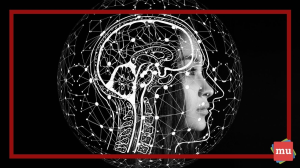Source – https://www.mediaupdate.co.za/
Deep learning technology and neural networks are powerful subsets of artificial intelligence that are majorly effective in real-world applications. But, its value is often overlooked. So, what is deep learning and why should it matter to you?
So what is deep learning? Jason Brownlee PhD, a professional developer and machine learning practitioner, defines deep learning as a “subfield of machine learning concerned with algorithms inspired by the structure and function of the brain called artificial neural networks”.
In this sense, the artificial neural networks mirror how neurons in the brain would respond as they take in data, extracting the most relevant information and sending this information to the next node in the hierarchy.
As the network progresses through the hierarchy, it becomes more complex. At the first level, the network learns something basic. In the next level, it takes this simple knowledge and builds on it, and so on. This process continues until the network reaches the top of the hierarchy.
In its real-world application, deep learning allows for major technological advancements, like self-driving cars, or more practical iterations, like virtual assistants such as Siri or Alexa.
In a business, deep learning can be used to train natural language processing systems to “understand text beyond simple definitions, read for context, sarcasm, and understand the actual mood and feeling of the writer”, says the team at MonkeyLearn.
This is particularly useful when conducting sentiment analysis. To find out more about the benefits of deep learning and its positive influence on business, media update’s Taylor Goodman spoke to Mary-Anne Piasecki, senior media analyst at Focal Points, a media intelligence and brand agency.
In this insightful Q&A, Piasecki discusses the differences between deep learning and machine learning, as well as the role of deep learning technologies when conducting media analysis.
1. How is deep learning different from machine learning?
Deep learning is a subset of machine learning whereby a human is needed to teach the AI (artificial intelligence), which only works on what it is taught. The AI, through algorithms, is able to learn from data and provide results based on its learned experience.
Deep learning is also able to improve its learnt experiences without humans needing to amend the algorithms. This technology works best with large amounts of data and can ‘solve problems’ even when working through different/diverse data sets.
2. How has the concept of deep learning transformed the way businesses conduct media monitoring?
Deep learning is beneficial to media monitoring as it is able to work through complex and diverse data within the media. At Focal Points, we work with a multitude of topics and information that require a human to go through manually and understand (in depth) before being able to provide concise analysis.
Human learning, and machine learning, is a timely process, and through deep learning clients are able to receive information at an advanced speed that would not be possible manually.
3. What role does deep learning and neural networks play in sentiment analysis?
We live in a world where information needs to be available at our fingertips, and as discussed before, up to thousands of media pieces for a human is a lengthy exercise.
Clients dealing with campaigns and crisis management need answers available immediately in order to react and implement their communication strategies. Through deep learning, we can provide those real-time results as the AI algorithms are learning and continuously developing themselves.
4. What is beneficial about using deep learning technologies in media analysis?
It speeds up manual work. Through using technology as our friend, we are able to improve the speed at which we understand data.
This allows us to spend more time on providing insights that matter and less time sorting through raw data. Sentiment is of growing importance to our clients, and so is having information readily available.
Thus, with deep learning, we can spend more time on the insight into their sentiment (the why and what of the data) than the manual process of allocating it.
How do you use deep learning technologies and AI in your daily life? Be sure to let us know in the comments section below.
